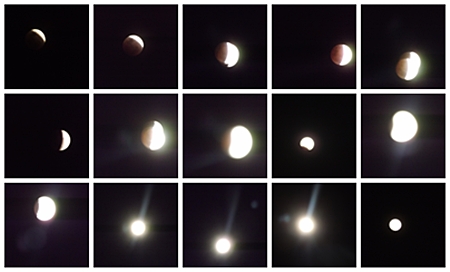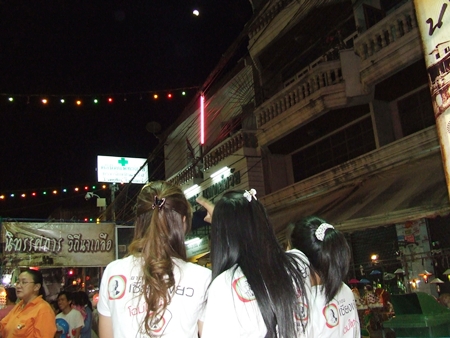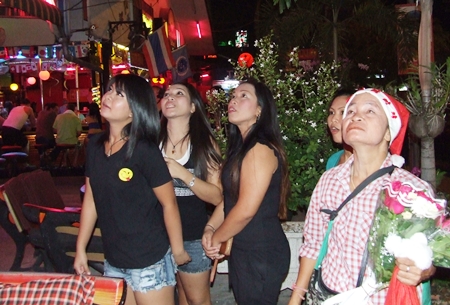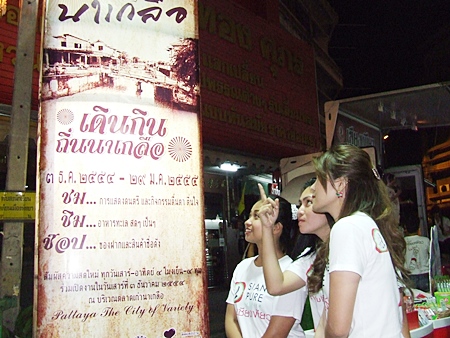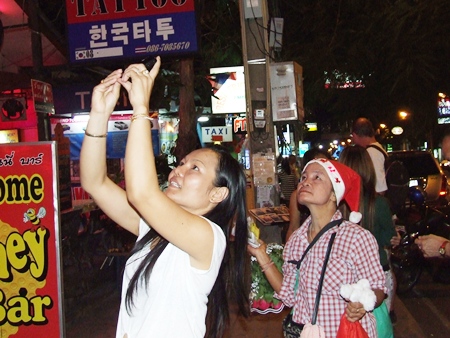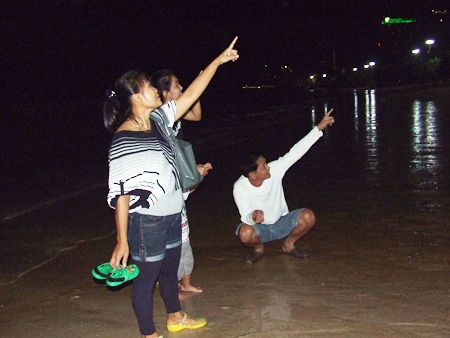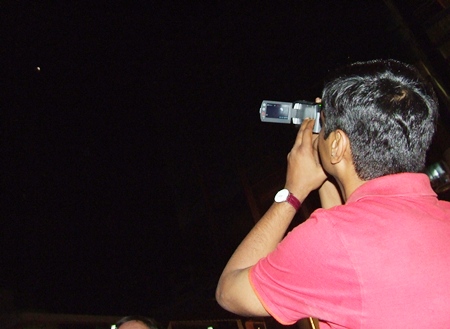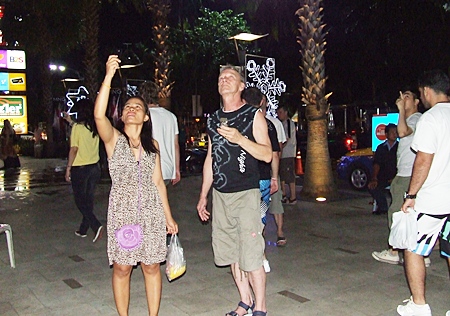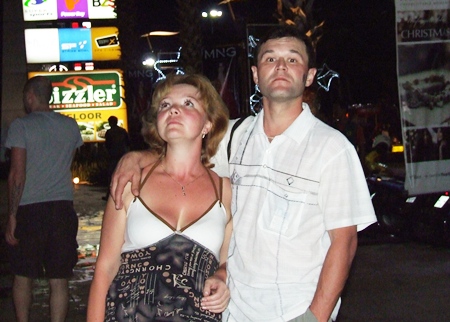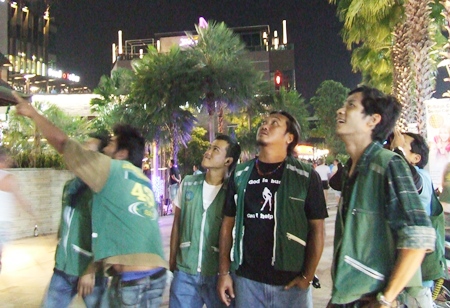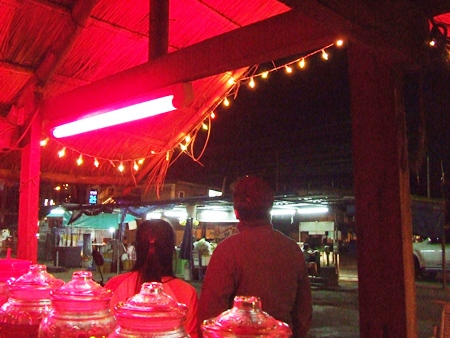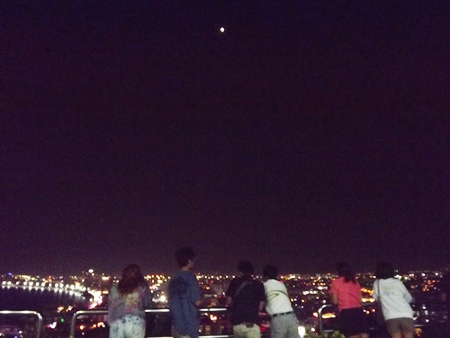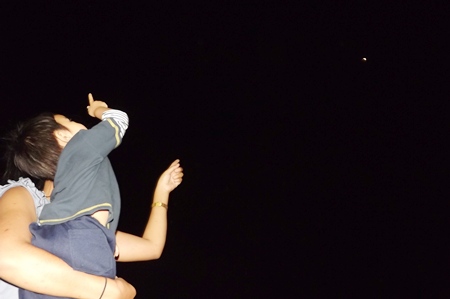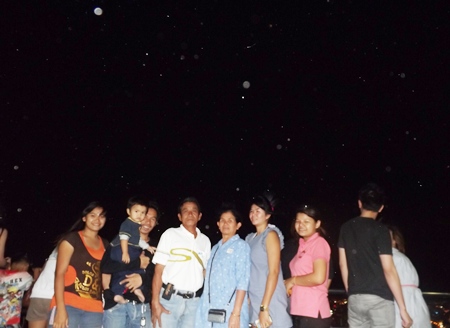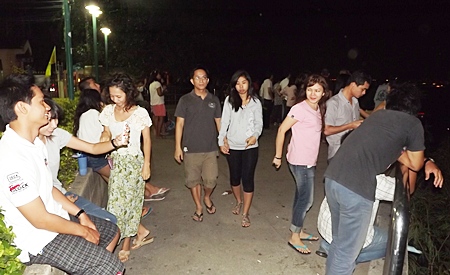Pattaya denizens gather in the thousands to watch a total lunar eclipse on Constitution Day, Dec. 10. The full moon turned blood red during the last total lunar eclipse until 2014.
Pattaya denizens got a sparkling view of the last total lunar eclipse until 2014, gazing skyward across the region as the full moon turned blood red.
Starting at 7.46 p.m., the 51-minute spectacle began when the moon entered the Earth’s penumbra and began passing the umbra at 9.06 p.m. The total eclipse reached its zenith at 9.19 p.m. before the moon passed through Earth’s umbra at 9.56 p.m.
Thanks to a cloudless sky, Pattaya residents and tourists got some of the best views of the sky show.
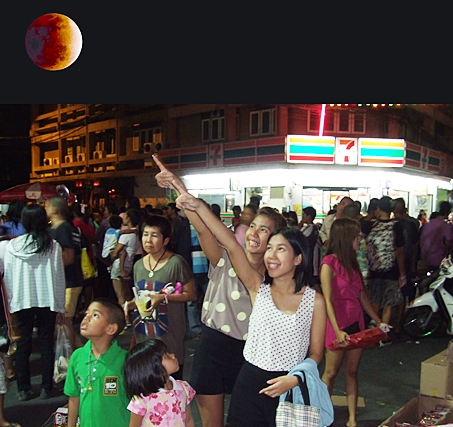 Pattaya denizens gather in the thousands to watch a total lunar eclipse on Constitution Day, Dec. 10. The full moon turned blood red during the last total lunar eclipse until 2014.
Pattaya denizens gather in the thousands to watch a total lunar eclipse on Constitution Day, Dec. 10. The full moon turned blood red during the last total lunar eclipse until 2014.
Vanalai Thonsith of Ubon Ratchathani was one of dozens of people who scaled Pratamnak Hill to catch the best view of the eclipse. “This is the first time I ever traveled to a viewing point to watch an eclipse. I was very excited to come,” Vanalai said.
Far more common than solar eclipses, the lunar versions occur about a half-dozen times a year. In Ubon, Vanalai said, the events are usually accompanied by fireworks, drum-playing and singing. “People believe we can wish for whatever we desire and that all that we’ve waited for will come true,” she said of the lunar event.
She also mentioned local beliefs, that using loud noises, such as fireworks, hitting pans, and honking horns, would induce the god of darkness (Rahu) to stop swallowing the moon.
Lunar eclipses also differ from their solar cousins in that the moon is not blacked out during an eclipse. Some light still passes through Earth’s atmosphere, casting a deep red shadow onto the moon which, otherwise, would disappear in the night sky.
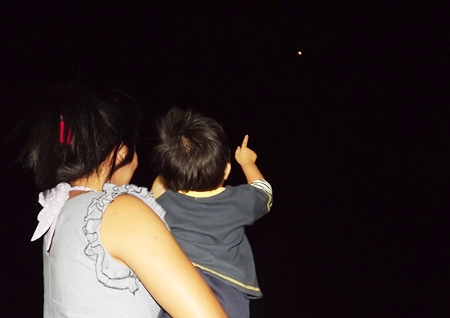 Vanalai Thonsith of Ubon Ratchathani shows her 2-year-old nephew Nong Palm the lunar eclipse from the top of Pratamnak Hill.
Vanalai Thonsith of Ubon Ratchathani shows her 2-year-old nephew Nong Palm the lunar eclipse from the top of Pratamnak Hill.
The satellite’s transformation into something out of a Hollywood werewolf movie. The effect doesn’t last long, however, but the right-to-left passing of the shadow was visible into the 11 o’clock hour.
While Thailand got some of the best views of the Constitution Day eclipse, the event was visible for a total of three hours and 32 minutes in parts of Asia, Australia, Africa and Europe. The next one – a partial covering of the moon – occurs June 4 and will be visible in Thailand, East Asia and Australia. The next total lunar eclipse occurs Oct. 8, 2014, which also is Auk Phansa, the end of Buddhist Lent.
